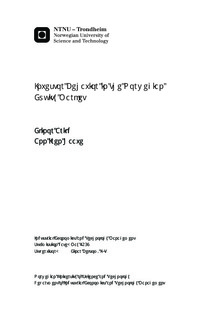Investor Behavior in the Norwegian Equity Market
Master thesis
Permanent lenke
http://hdl.handle.net/11250/266837Utgivelsesdato
2014Metadata
Vis full innførselSamlinger
Sammendrag
We examine investor behavior in the Norwegian equity market by studying two behavioral finance phenomena: The Disposition Effect and Herd behavior. Both utilize market data from Oslo Stock Exchange. This thesis will contribute to the existing literature on investor behavior by including evidence from Norway, characterized as a developed market. In the disposition effect paper, the methodology employed on the data examines the relationship between volume at a given point in time, and volume that took place in the past at different stock price levels. In the second paper focusing on herd behavior, a model that analyses the relationship between cross-sectional absolute deviations of asset returns and the corresponding market returns is used for the main part, while the final part combines the volume perspective from the disposition effect study with relevant assumptions for detecting herd behavior. The empirical analysis of the disposition effect presents scattered evidence, suggesting that the disposition effect exists to some extent in Norway. In addition, the evidence for tax-loss-selling, representing the opposite prediction of the disposition effect, is limited. Equivalently, by using the cross-sectional approach for detecting herd behavior we find no evidence of herding in the Norwegian market. In addition, no significant signs of herding are found in the investigation of herding through a volume perspective. Our results for the disposition effect and herd behavior in Norway suggests that they are not powerful factors in determining equity returns and volumes in the market, coinciding with similar empirical research on developed markets. This can partly be explained by sufficient access to diverse information and investment opportunities on individual stocks, and partly by the lack of comprehensive empirical models.
